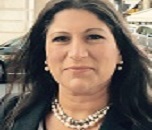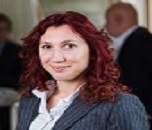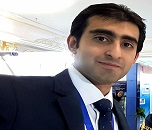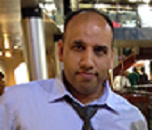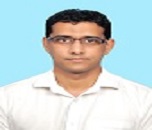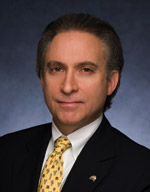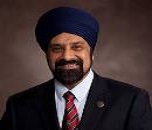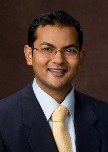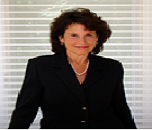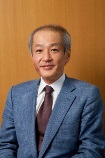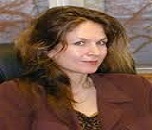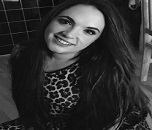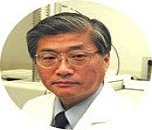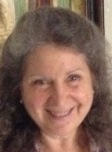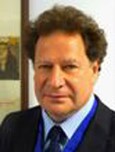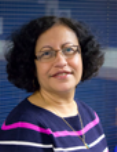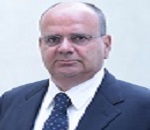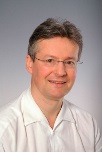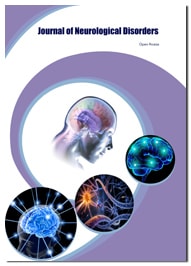Theme: Modern Diagnosis and Adaptive treatments for Stroke and Neurological Disorders
Euro Stroke 2018
It’s with great pleasure and great honor to invite you to the “8th International Congress on Stroke and Neurology ” scheduled during November 19-20, 2018 Paris, France.
Welcome to most exciting and fascinating city, Paris, France.
Within this splendid setting, we plan to deliver a conference that will exceed your expectations. Our event aims to make people with Stroke feel safe and to create a familiar environment for them.
During this year’s Conference, we hope that you will seize the opportunity to rekindle on-going connections and spark new ones with your colleagues from around the globe
The Conference will be organized around the theme “Modern Diagnosis and Adaptive treatments for Stroke and Neurological Disorders”
Euro Stroke 2018 anticipates more than 500 participants around the globe to experience thought provoking Keynote lectures, Oral & Poster presentations. This year conference will offer ample opportunities for all stakeholders working on Stroke, Dementia, Alzheimer’s and neurology to expose their research work.
Our conference aims to gather the Researchers, principal investigators, experts, neurologists and researchers working on brain from both academia and health care industry, Business Delegates, Scientists and students across the globe to provide an international forum for the dissemination of original research results, new ideas and practical development experiences.
This year’s Conference program, coupled with the Business Opportunity Exchange, is an event you can’t afford to miss!
Why to attend?
8th International Congress on Stroke and Neurology is organizing an outstanding Scientific Exhibition/Program and anticipates the world's leading Neurologists, health professionals involved in the profession and practice of neuroscience. The event will also reflect interest of specialists in the clinical research on Stroke, dementia and Alzheimer’s disease. Conference series organizing this international event for people to take part and gain a better understanding of such diseases, to access treatment as well as information, advice and support and to have their health monitored more closely.
This International meeting is an effort to make possible interactions among world leading scientists, research scholars, professionals, young researchers from different parts of the world to exchange their knowledge and conduct symposia, show experiments with new innovative techniques that disseminate information about clinical tradition, best practices, skills and knowledge in the field of neuroscience. In Euro Stroke 2018, international symposiums, B2B meetings, international workshops will also be organized to discuss the specific topics in the field of Stroke and Neurology.
Target Audience:
- Neurologists and Directors
- Physicians
- Neuroscientists
- Specialists
- Researchers
- Health care professionals
- Professors
- Industrial Experts
- Neurosurgeons
- Psychiatrist
- Nutritional Scientists
- Lecturers and Students from Academia in the study of Dementia
- Students from Academia in the research of Neurology
- Neuro Physiotherapists
On behalf of the committee, we welcome you to join the upcoming “8th International Conference on Stroke and Neurology” to be held during November 19-20, 2018 Paris, France
Theme: Modern Diagnosis and Adaptive treatments for Stroke and Neurological Disorders
Brain Stroke Congress 2018 is a meeting of International level that involves Neuroscience organizations as well as Stroke committees to deliver their ideas on the future aspects of the diagnosis and treatment of Neurological disorders.
Neurological disorders, ranging from epilepsy to Alzheimer disease, from stroke to headache, are the diseases of the spines, brain and nerves that connects them.
A stroke is a medical emergency that requires early treatment that indicates early action can minimize brain damage and potential complications. A stroke happens when there is interruption in blood supply to brain and when it happens, the brain cells begin to die and Stroke is ranked as the second leading cause of death in the Europe and USA.
Track 1: Stroke
A stroke is a serious medical condition that occurs when the blood supply to part of the brain is cut off. Brain needs the oxygen and nutrients provided by blood to function properly. If the supply of blood is restricted or stopped, brain cells begin to die. This can lead to brain damage and possibly death. Strokes are a medical emergency and prompt treatment is essential because the sooner a person receives treatment for a stroke, the less damage is likely to happen.
1.1 Ischemic Stroke
1.2 Thrombosis
1.3 Embolism
1.4 Cerebral venous sinus thrombosis.
1.5 Hemorrhagic Stroke
1.6 Intracerebral haemorrhage
1.7 Subarachnoid haemorrhage
1.8 Transient Ischemic Stroke
Associations on Stroke
The American Stroke Association, North Carolina Stroke Association, National Stroke Foundation Australia, Heart and Stroke Foundation of Canada, European Stroke Initiative, American Academy of Neurology, American Neurological Association, National Institute of Neurological Disorders and Stroke (NINDS)
Track 2: Stroke Causes
A stroke can happen in two main ways: Something blocks the flow of blood, or something causes bleeding in the brain. There are two main causes of strokes:
Ischaemic (accounting for over 82% of all cases): the blood supply is stopped due to a blood clot
Haemorrhagic: a weakened blood vessel supplying the brain bursts and causes brain damage
There is also a related condition known as a transient ischaemic attack (TIA), where the supply of blood to the brain is temporarily interrupted, causing a 'mini-stroke'. TIAs should be treated seriously as they are often a warning sign that a stroke is coming.
The American Stroke Association, North Carolina Stroke Association, National Stroke Foundation Australia, Heart and Stroke Foundation of Canada, European Stroke Initiative, American Academy of Neurology, American Neurological Association, National Institute of Neurological Disorders and Stroke (NINDS)
2.1: Thrombotic stroke
2.2: Embolic stroke
2.3: Cerebral hypoperfusion
2.4: Venous thrombosis
2.5: Intracerebral hemorrhage
2.6: Silent stroke
The American Stroke Association, North Carolina Stroke Association, National Stroke Foundation Australia, Heart and Stroke Foundation of Canada, European Stroke Initiative, American Academy of Neurology, American Neurological Association, National Institute of Neurological Disorders and Stroke (NINDS)
Track 3: Neurodegenerative disorders
Neurodegenerative diseases are defined as hereditary and sporadic conditions which are characterized by progressive nervous system dysfunction. These disorders are often associated with atrophy of the affected central or peripheral structures of the nervous system. They include diseases such as Alzheimer's Disease and other dementia, Brain Cancer, Degenerative Nerve Diseases, Encephalitis, Epilepsy, Genetic Brain Disorders, Head and Brain Malformations, Hydrocephalus, Stroke, Parkinson's Disease, Multiple Sclerosis, Amyotrophic Lateral Sclerosis (ALS or Lou Gehrig's Disease), Huntington's Disease, Prion Diseases, and others
3.1: Alzheimer's disease
3.3: Parkinson's disease
3.4: Prion disease
3.5: Motor neurone diseases (MND)
3.6: Huntington's disease (HD)
3.7: Spinocerebellar ataxia (SCA)
3.8: Spinal muscular atrophy (SMA)
3.7: Amyotrophic lateral sclerosis (ALS)
3.8: Batten disease
The American Stroke Association, North Carolina Stroke Association, National Stroke Foundation Australia, Heart and Stroke Foundation of Canada, European Stroke Initiative, American Academy of Neurology, American Neurological Association, National Institute of Neurological Disorders and Stroke (NINDS)
Neurology is a branch of medicine dealing with nervous system disorders. It deals with the diagnosis and treatment of all categories of conditions and disease involving the central and peripheral nervous systems along with subdivisions, the autonomic and somatic nervous systems.
4.1: Brain Injury
4.2: Multiple sclerosis
4.3: Sleep disorders
4.4: Mental Health
4.5: Addictive Disorders
4.6: Neurocognitive changes in AIDS
4.7: Epilepsy
4.8: Headache
4.7: Memory Disorders
4.5: Neurological Disorders
The American Stroke Association, North Carolina Stroke Association, National Stroke Foundation Australia, Heart and Stroke Foundation of Canada, European Stroke Initiative, American Academy of Neurology, American Neurological Association, National Institute of Neurological Disorders and Stroke (NINDS)
Track 5: Cerebrovascular Disorders
Cerebrovascular refers to blood flow in the brain. Arteries supplying oxygen to the brain are affected and bring about one of a number of cerebrovascular diseases. Most common is a stroke or mini-stroke and sometimes can be hemorrhagic stroke. Cerebrovascular diseases include carotid stenosis, vertebral stenosis and intracranial stenosis, aneurysms, and vascular malformations. Restriction in blood flow can be caused by vessel narrowing, clot formation, blockage or blood vessel rupture. It is estimated that about 6 million deaths are due to cerebrovascular disorders. It is the second leading cause of death in the world and 6th most common cause of disability.
5.1: Congenital diseases
5.2: Acquired cerebrovascular diseases
5.3: Idiopathic diseases
5.4: Aneurysms
The American Stroke Association, North Carolina Stroke Association, National Stroke Foundation Australia, Heart and Stroke Foundation of Canada, European Stroke Initiative, American Academy of Neurology, American Neurological Association, National Institute of Neurological Disorders and Stroke (NINDS)
Track 6: CNS
CNS and Neurological disorders are diseases that affect the brain and the central and autonomic nervous systems. In recognizing the signs and symptoms of neurological disorders, it is first important to distinguish the different types of neurological disorders.
6.1: Addiction
6.2: Cerebral edema
6.3: CNS Neoplasia
6.5: Neuroinfectious Diseases
6.5: Neurocognitive
6.6: Bipolar Disorder
6.7: Therapeutics for CNS Disorders
6.8: Depression and Anxiety
The American Stroke Association, North Carolina Stroke Association, National Stroke Foundation Australia, Heart and Stroke Foundation of Canada, European Stroke Initiative, American Academy of Neurology, American Neurological Association, National Institute of Neurological Disorders and Stroke (NINDS)
Track 7: Neuro Oncology
Neuro-oncology covers all tumors of the brain and spinal cord, including, astrocytoma, glioma, glioblastoma, ependymoma, and others. These diseases are devastating to patients, and challenging to treat. Common treatments are radiation and, when accessible, surgery, but these tumors almost always recur. Most therapeutic agents can not cross the blood brain barrier to access the tumor, and are therefore not useful for the treatment of these diseases.
7.1: Brain Aneurysm
7.2: Skull metastasis
7.3: Spinal metastasis
7.4: Blood-brain barrier disruption (BBB)
7.5: Peripheral neuropathy
7.6: Amyotrophic lateral sclerosis (ALS)
7.8: Glioma
The American Stroke Association, North Carolina Stroke Association, National Stroke Foundation Australia, Heart and Stroke Foundation of Canada, European Stroke Initiative, American Academy of Neurology, American Neurological Association, National Institute of Neurological Disorders and Stroke (NINDS)
Track 8: Pediatrics Stroke and metabolic disorders
Stroke is brain damage that occurs secondary to the blockage or breakage of blood vessels in the brain. The causes of stroke in children are many and often not well understood. Diagnosis requires careful clinical examination combined with brain imaging. Early treatment focuses on protecting the brain and keeping blood vessels open to prevent more strokes. Most children experience neurologic deficits with long-term treatments focused on physical, developmental, and psychosocial complications.
8.1: Seizures
8.2: Extreme sleepiness.
8.3: Sickle-cell disease
8.4: Congenital heart defects
8.4: Dizziness, trouble with balance or walking
The American Stroke Association, North Carolina Stroke Association, National Stroke Foundation Australia, Heart and Stroke Foundation of Canada, European Stroke Initiative, American Academy of Neurology, American Neurological Association, National Institute of Neurological Disorders and Stroke (NINDS)
Track 9: Risk Assessment and Prevention of Stroke
Taking control of your health is important. But staying well can sometimes be a challenge. Some health risks are avoidable, and others are genetic. Knowing your risks of breast cancer, diabetes, stroke and many other major health conditions will help give you the knowledge you need to manage your care.
9.1: Stroke Risk Assessment Tool (SRAT)
9.2: The Cincinnati Prehospital Stroke Scale
9.3: Anticoagulant and Antiplatelet Agents
9.4: Thrombolysis
9.5: Thrombectomy, Carotid endarterectomy
9.6: Surgery for hydrocephalus
The American Stroke Association, North Carolina Stroke Association, National Stroke Foundation Australia, Heart and Stroke Foundation of Canada, European Stroke Initiative, American Academy of Neurology, American Neurological Association, National Institute of Neurological Disorders and Stroke (NINDS)
Track 10: Stroke Rehabilitation & Recovery
Stroke is one of the leading causes of long-term adult disability, affecting approximately 810,000 people each year in the USA. The word stroke indicates that no one is ever prepared for this sudden cause. Stroke survivors and their families can find workable solutions to most difficult situations by approaching every problem with patience, ingenuity, perseverance and creativity. Early recovery and rehabilitation can improve functions and sometimes remarkable recoveries for someone who suffered a stroke
10.1: Acute Rehabilitation
10.2: Physical Therapist
10.3: Occupational Therapist
10.4: Speech-Language Pathologists
10.5: Non-invasive Brain stimulation
The American Stroke Association, North Carolina Stroke Association, National Stroke Foundation Australia, Heart and Stroke Foundation of Canada, European Stroke Initiative, American Academy of Neurology, American Neurological Association, National Institute of Neurological Disorders and Stroke (NINDS)
Track 11: Neuropharmacology
Neuropharmacology is the study of how drugs that affect cellular function in the nervous system, and the neural mechanisms through the influence behavior. There are two main branches of neuropharmacology: behavioral and molecular. Behavioral neuropharmacology focuses on the study of how drugs affect human behavior (neuropsychopharmacology), including the study of how drug dependence and addiction affect the human brain.
11.1: Neuroanesthesia
11.2: Neurochemical Transmission
11.3: Behavioral Neuropharmacology
11.4: NeuroPharmacotherapy
11.5: Pharmacotherapeutics
11.6: Neurotransmitters
The American Stroke Association, North Carolina Stroke Association, National Stroke Foundation Australia, Heart and Stroke Foundation of Canada, European Stroke Initiative, American Academy of Neurology, American Neurological Association, National Institute of Neurological Disorders and Stroke (NINDS)
Track 12: Neuro Diagnosis & Imaging techniques
Neuro diagnostic tests includes use of vital tools when a patient’s condition is thought to be based in the development of techniques allows scientists to see inside the living brain and monitor the nervous system activity. So, there are many imaging techniques available and it takes several times for processing. Some procedures are performed in specialized settings, conducted to determine the presence of a particular disorder or abnormality. Many tests like Computed Tomography (CT). Neuroimaging, Magnetic Resonance Imaging (MRI) were previously conducted in a hospital are now performed in a physician’s office or at an outpatient testing facility, with little if any risk to the patient.
12.1: Computed axial tomography
12.2: Diffuse optical imaging
12.3: Neuroimaging
12.4: MRI (Magnetic Resonance Imaging)
12.5: Macrocephaly
12.6: Hybrid PET/MRI testing
12.7: Computer assisted tomography (CT)
The American Stroke Association, North Carolina Stroke Association, National Stroke Foundation Australia, Heart and Stroke Foundation of Canada, European Stroke Initiative, American Academy of Neurology, American Neurological Association, National Institute of Neurological Disorders and Stroke (NINDS)
Track13: Therapeutics approaches of Neurological Disorders
Therapeutics approaches of neurological disorders is a apart of a cure, sometimes patients with neurological issues can be placed in rehabilitation as part of an effort to restore some lost function. This is usually a hopeful sign, as it’s rare to find a patient assigned to therapy when there’s little to no hope of at least a partial recovery. Therapies for neurological disorders may often consist of: Lifestyle changes to either prevent or minimize the impact of such conditions, Physiotherapy to manage the symptoms and restore some function; Pain management, as much impairment can be associated with considerable discomfort; Medication to either restore function or prevent a worsening of the patient’s condition.
13.1: Neuropathic pain and its therapeutics
13.2: Neuropsychiatric Conditions
13.3: Neuropathy and therapies
13.4: Migraine & Chronic Pain
13.5: Spinocerebellar ataxia
13.6: Stroke rehabilitation: Care and guidance
The American Stroke Association, North Carolina Stroke Association, National Stroke Foundation Australia, Heart and Stroke Foundation of Canada, European Stroke Initiative, American Academy of Neurology, American Neurological Association, National Institute of Neurological Disorders and Stroke (NINDS)
Track 14: Clinical Trials & Case Reports
Clinical trials & Case reports of neurological and neurology disorders are ending up being more typical in the general population field. The financial and social costs of neurological and neurology disorders to society are tremendous. Various huge pharmaceutical associations have moved a long way from CNS and neurology investigate. This meeting will allow assigns to expand additional significant encounters into the acknowledged methodology in clinical trials, and furthermore keeping an eye on the challenges in neurology and neurology ask about and by looking latest preclinical and clinical studies.
14.1: Prevention trials
14.2: Case Reports on Neurodegenerative Disorders
14.3: Case reports on neurosurgery
14.4: Case Reports on Neuro Oncology
14.5: History of present illness in affected patients
14.6: Vaccination by self-antigens
14.7: others
Brain stroke is a general term that describes a group of symptoms-such as Ischemic stroke, heart attack, loss of memory, judgment, language, complex motor skills, and other intellectual function-caused by the permanent damage or death of the brain's nerve cells, or neurons. Brain stroke, including Ischemic strokes, Hemorrhagic strokes, and Transient ischemic attacks is one of the biggest global public health challenges facing our generation.
Brain Stroke market is one of the most common types of neurovascular disease in which either a clot blocks restricts supply of blood to the brain (ischemic) or blood vessels in the brain rupture (hemorrhagic). The vascular diseases affect normal functioning of the veins and arteries that constitute circulatory system of a human body generally in the form of blockage or rupture. The ruptures are usually headed by the formation of an aneurysm which is an unusual bulge or ballooning in the vessels of blood. They are formed when part of an artery wall weakens permitting the vessel to widen abnormally or balloon. It becomes difficult to predict an aneurysm before it ruptures, leading to existence of several un-ruptured aneurysms.
The global Brain Stroke and acute ischemic stroke diagnosis and treatment market is expected to reach US$1.869 billion before the end of 2022. It is progressing at a CAGR of 7.3% within a forecast period from 2014 to 2022. The market was valued at US$1.275 billion in 2014. The leading market intelligence provider has recently published a new report pertaining to the pharmaceutical sector, titled “Acute Ischemic Stroke Diagnosis and Treatment Market - Global Industry Analysis, Size, Share, Growth, trends and forecast 2014 - 2020. In the United States alone, experts estimate that as many as five million people age 45 and older suffer from Brain Stroke.
Globally, results of a recent meta-analysis suggest that 48 million people lived with Brain Stroke worldwide in 2010, with numbers expected to almost double every 20 years, to 65.7 million in 2030 and 116.5 million in 2050.
In the United States alone, experts estimate that as many as five million people age 45 and older suffer from Brain Stroke.
Research conducted by the Brain stroke Society, shows that there will be 950,000 people living with dementia in the UK by 2016. This will cost the UK £29 billion a year.
Two-thirds (£17.4 billion) of the cost of dementia is paid by people with dementia and their families, either in unpaid care (£15.6 billion) or in paying for private social care. This is in contrast to other conditions, such as heart disease and cancer, where the NHS provides care that is free at the point of use.
In Europe, the neurological disorder is spraying in such a manner that it has been estimated that 36% of all disease burden is attributable to neurological disorders i.e. affecting more than 160 million Europeans — 39% of the population each year. European Commission has significantly increased funding for research on brain diseases, with 5.3-billion-euro ear-marked between 2007 and 2017. This sum, shared between the 165 million sufferers in Europe, works out at just over 3 euros per person per year.
Research conducted by the Brain stroke Society, shows that there will be 850,000 people living with dementia in the UK by 2015. This will cost the UK £26 billion a year.
Two-thirds (£15.4 billion) of the cost of dementia is paid by people with dementia and their families, either in unpaid care (£12.6 billion) or in paying for private social care. This is in contrast to other conditions, such as heart disease and cancer, where the NHS provides care that is free at the point of use.
Increasing diabetic population globally, growing ageing population, increasing obese population, increasing cigarette and tobacco consumption, rising healthcare expenditure, increasing GDP of economies are some of the significant factors driving the growth of brain stroke market. However, growth of the market is hindered by certain challenges including shortcomings in the drug treatment for brain stroke, shortage of stroke specialists in the U.S., and entry threats for small companies in medical device industry. The recent trends include introduction of early detection devices and non-invasive brain stimulations and shift in the treatment model of brain stroke.
International Conference on Neurological Disorders & Stroke and Neurooncology was organized during April 24-25, 2017 at Dubai, UAE with the support and contribution of the Organizing Committee Members.
Firstly we must thank you for trusting us and participating at Stroke 2017, a global platform to discuss various important aspects of Neurology.
The conference was organized around the theme “Adaptive treatments and Modern Diagnosis for Neurological Disorders and Stroke”. The event implanted a firm relation of upcoming strategies in the field of Novel approaches and Developments in Neurological disorders and Stroke with the scientific community.
The conference proceedings were carried out through various Scientific-sessions and plenary lectures, of which the following Speakers were highlighted as Keynote speakers: Sandro Iannaccone, San Raffaele hospital, Milan Italy, Josh Underwood, Vermont Academy, USA, Wai Kwong Tang, Chinese University of Hong Kong, and Rola Aatif Mahmood, Slamaniya Medicals, Bahrain.
So as a continuation of Stroke 2017, we would like to heartily invite you to our upcoming 8th International Congress on Stroke and Neurology scheduled during November 19-20, 2018 Paris, France. We look forward to see your benign presence with active contribution and support to make this event successful once more.
Once again it’s our pleasure to welcome you to our upcoming
8th International Congress on Stroke and Neurology, November 19-20, 2018 Paris, France
Planning a Trip to Paris ?? Attend our Meeting!!!
Issue with VISA!!
Euro Stroke 2018 Committee will be happy to help you in all regards to plan your trip to Paris, France. Avail the official invitation letter from us to attend this event and ahead with a closer step for approval of your VISA
Mail to: samanthakiara@yandex.com
eurostrokeconference18@gmail.com
Conference Highlights
- Stroke
- Stroke Causes
- Neurodegenerative disorders
- Neurology
- Cerebrovascular Disorders
- CNS
- Neuro Oncology
- Pediatrics Stroke
- Risk Assessment and Prevention of Stroke
- Stroke Rehabilitation & Recovery
- Neuropharmacology
- Neuro Diagnosis & Imaging techniques
- Therapeutics approaches of Neurological Disorders
- Clinical Trials & Case Reports
To share your views and research, please click here to register for the Conference.
To Collaborate Scientific Professionals around the World
| Conference Date | November 19-20, 2018 | ||
| Sponsors & Exhibitors |
|
||
| Speaker Opportunity Closed | |||
| Poster Opportunity Closed | Click Here to View | ||
Useful Links
Special Issues
All accepted abstracts will be published in respective Our International Journals.
- Brain Disorders & Therapy
- International Journal of Neurorehabilitation
- Journal of Neurological Disorders
Abstracts will be provided with Digital Object Identifier by




